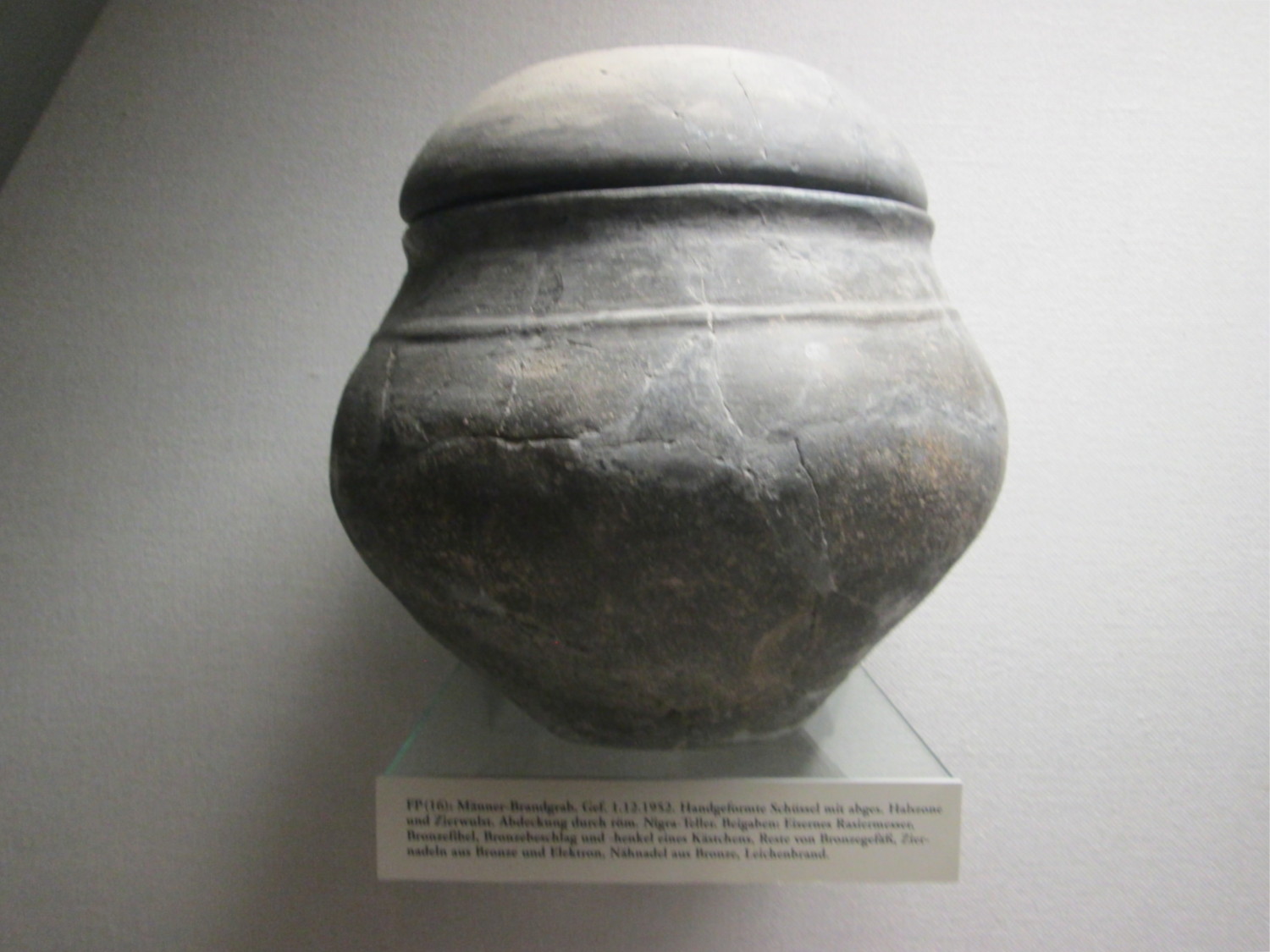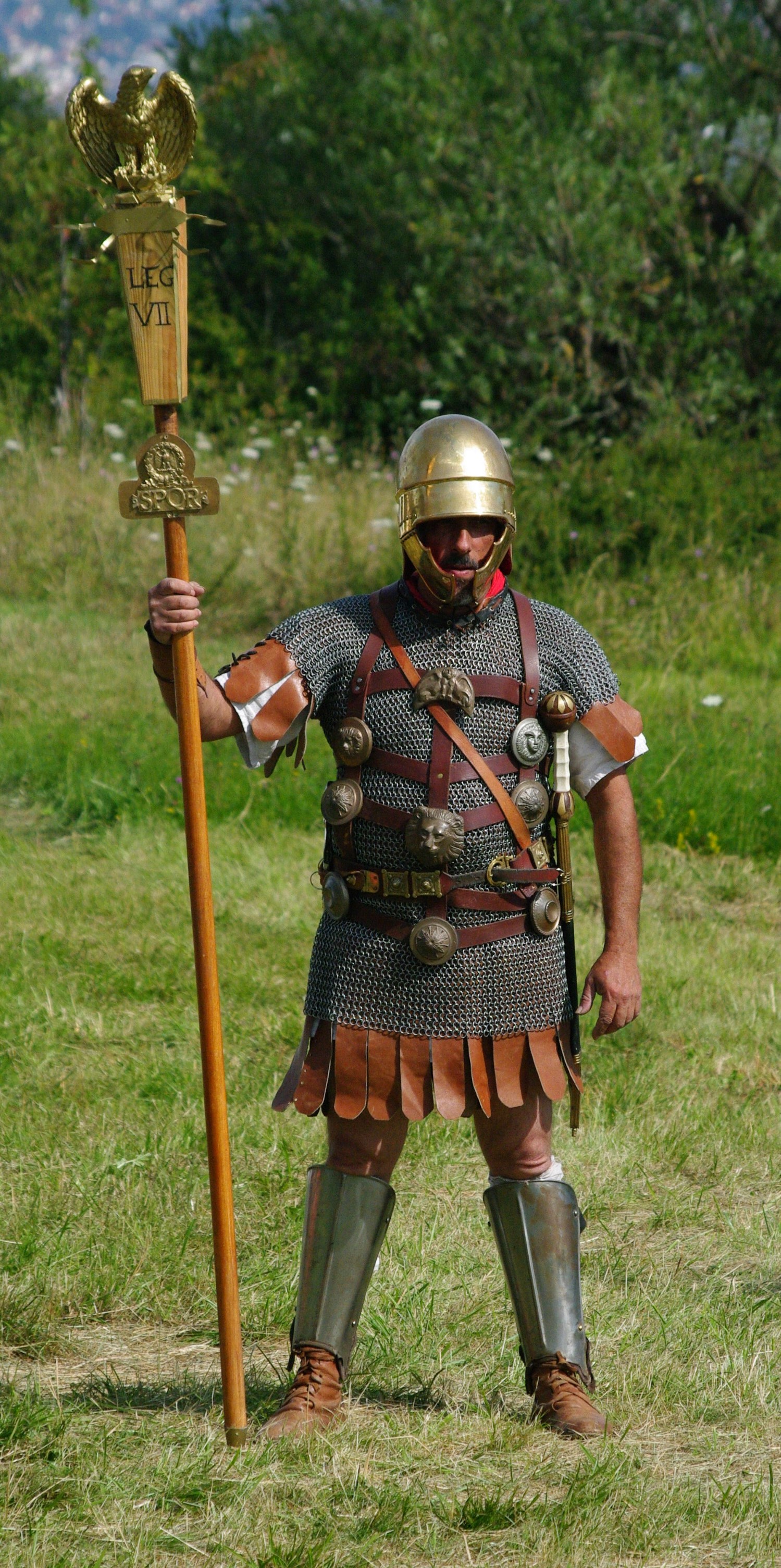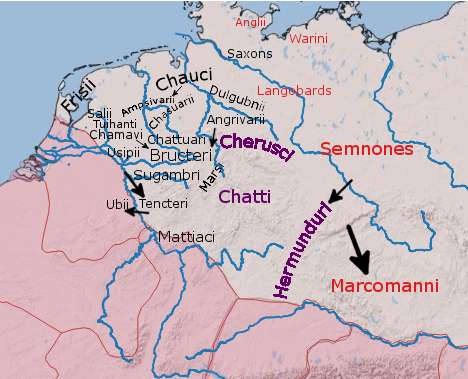|
Suebi
file:1st century Germani.png, 300px, The approximate positions of some Germanic peoples reported by Graeco-Roman authors in the 1st century. Suebian peoples in red, and other Irminones in purple. The Suebi (also spelled Suavi, Suevi or Suebians) were a large group of Germanic peoples originally from the Elbe river region in what is now Germany and the Czech Republic. In the early Roman era they included many peoples with their own names such as the Marcomanni, Quadi, Hermunduri, Semnones, and Lombards. New groupings formed later, such as the Alamanni and Bavarians, and two kingdoms in the Migration Period were simply referred to as Suebian. Although Tacitus specified that the Suebian group was not an old tribal group itself, the Suebian peoples are associated by Pliny the Elder with the Irminones, a grouping of Germanic peoples who claimed ancestral connections. Tacitus mentions Suebian languages, and a geographical "Suevia". The Suevians were first mentioned by Julius Caesar i ... [...More Info...] [...Related Items...] OR: [Wikipedia] [Google] [Baidu] |
Marcomanni
The Marcomanni were a Germanic people who lived close to the border of the Roman Empire, north of the River Danube, and are mentioned in Roman records from approximately 60 BC until about 400 AD. They were one of the most important members of the powerful cluster of allied Suebian peoples in this region, which also included the Hermunduri, Varisti, and Quadi along the Danube, and the Semnones and Langobardi to their north. After a major defeat to the Romans in about 9 BC, the Marcomanni somehow received a new king named Maroboduus, who had grown up in Rome. He subsequently led his people and several others into a region surrounded by forests and mountains in the present day Czech Republic. Before 9 BC the homeland of the Marcomanni is not known, but archaeological evidence suggests that they lived near the central Elbe river and Saale, or possibly to the southwest of this region in Franconia. The Marcomanni were first reported by Julius Caesar among the Germanic peoples ... [...More Info...] [...Related Items...] OR: [Wikipedia] [Google] [Baidu] |
Ariovistus
Ariovistus was a leader of the Suebi and other allied Germanic peoples in the second quarter of the 1st century BC, who name appears prominently in Julius Caesar's '' Commentarii de Bello Gallico''. Before their conflict with the Romans, Ariovistus and his followers took part in a war in Gaul, assisting the Arverni and Sequani in defeating their rivals, the Aedui. They then settled in large numbers into conquered Gallic territory in the Alsace region. They were defeated however, in the Battle of Vosges and driven back over the Rhine in 58 BC by Julius Caesar. While known primarily for his conflict with Caesar, Ariovistus is one of the earliest named figures associated with the peoples the Romans later categorized as '' Germani''. Caesar portrays Ariovistus as a violent and threatening invader in Gaul; however, modern scholars recognize that this depiction reflects Roman political motives in as much as it does historical fact. Like other major ancient Germanic figures, Ariovi ... [...More Info...] [...Related Items...] OR: [Wikipedia] [Google] [Baidu] |
Quadi
The Quadi were a Germanic peoples, Germanic people during the Roman era, who were prominent in Greek and Roman records from about 20 AD to about 400 AD. By about 20 AD they had a kingdom centred in the area of present-day western Slovakia, north of the Limes (Roman Empire), Roman border on the Danube river. After probably first settling near the Morava (river), Morava river the Quadi expanded their control eastwards over time until they also stretched into present day Hungary. This was part of the bigger region which had been partly vacated a generation earlier by the Celts, Celtic Boii, and their opponents the Dacians. The Quadi were the easternmost of a series of four related Suebian kingdoms that established themselves near the river frontier after 9 BC, during a period of major Roman invasions into both western Germania to the northwest of it, and Pannonia to the south of it. The other three were the Hermunduri, Naristi (also known as Varisti), and the Quadi's powerful western ... [...More Info...] [...Related Items...] OR: [Wikipedia] [Google] [Baidu] |
Gallic Wars
The Gallic Wars were waged between 58 and 50 BC by the Roman general Julius Caesar against the peoples of Gaul (present-day France, Belgium, and Switzerland). Gauls, Gallic, Germanic peoples, Germanic, and Celtic Britons, Brittonic tribes fought to defend their homelands against an aggressive Roman Military campaign, campaign. The Wars culminated in the decisive Battle of Alesia in 52 BC, in which a complete Roman victory resulted in the expansion of the Roman Republic over the whole of Gaul. Though the collective Gallic armies were as strong as the Roman forces, the Gallic tribes' internal divisions eased victory for Caesar. Gallic chieftain Vercingetorix's attempt to unite the Gauls under a single banner came too late. Caesar portrayed the invasion as being a preemptive and defensive action, but historians agree that he fought the wars primarily to boost his political career and to pay off his debts. Still, Gaul was of significant military importance to the Romans. ... [...More Info...] [...Related Items...] OR: [Wikipedia] [Google] [Baidu] |
Lombards
The Lombards () or Longobards () were a Germanic peoples, Germanic people who conquered most of the Italian Peninsula between 568 and 774. The medieval Lombard historian Paul the Deacon wrote in the ''History of the Lombards'' (written between 787 and 796) that the Lombards descended from a small tribe called the Winnili,: "From Proto-Germanic language, Proto-Germanic ''wikt:Reconstruction:Proto-Germanic/winnaną, winna-'', meaning "to fight, win" who dwelt in northern Germany before migrating to seek new lands. Earlier Roman-era historians wrote of the Lombards in the first century AD as being one of the Suebian peoples, also from what is now northern Germany, near the Elbe river. They migrated south, and by the end of the fifth century, the Lombards had moved into the area roughly coinciding with modern Austria and Slovakia north of the Danube. Here they subdued the Heruls and later fought frequent wars with the Gepids. The Lombard king Audoin defeated the Gepid leader Thuris ... [...More Info...] [...Related Items...] OR: [Wikipedia] [Google] [Baidu] |
Alamanni
The Alemanni or Alamanni were a confederation of Germanic tribes * * * on the Upper Rhine River during the first millennium. First mentioned by Cassius Dio in the context of the campaign of Roman emperor Caracalla of 213 CE, the Alemanni captured the in 260, and later expanded into present-day Alsace and northern Switzerland, leading to the establishment of the Old High German language in those regions, which by the eighth century were collectively referred to as '' Alamannia''. In 496, the Alemanni were conquered by the Frankish leader Clovis and incorporated into his dominions. Mentioned as still pagan allies of the Christian Franks, the Alemanni were gradually Christianized during the seventh century. The is a record of their customary law during this period. Until the eighth century, Frankish suzerainty over Alemannia was mostly nominal. After an uprising by Theudebald, Duke of Alamannia, however, Carloman executed the Alamannic nobility and installed Frankish ... [...More Info...] [...Related Items...] OR: [Wikipedia] [Google] [Baidu] |
Germanic Peoples
The Germanic peoples were tribal groups who lived in Northern Europe in Classical antiquity and the Early Middle Ages. In modern scholarship, they typically include not only the Roman-era ''Germani'' who lived in both ''Germania'' and parts of the Roman Empire, but also all Germanic speaking peoples from this era, irrespective of where they lived, most notably the Goths. Another term, ancient Germans, is considered problematic by many scholars since it suggests identity with present-day Germans. Although the first Roman descriptions of ''Germani'' involved tribes west of the Rhine, their homeland of ''Germania'' was portrayed as stretching east of the Rhine, to southern Scandinavia and the Vistula in the east, and to the upper Danube in the south. Other Germanic speakers, such as the Bastarnae and Goths, lived further east in what is now Moldova and Ukraine. The term ''Germani ''is generally only used to refer to historical peoples from the 1st to 4th centuries CE. Different ac ... [...More Info...] [...Related Items...] OR: [Wikipedia] [Google] [Baidu] |
Semnones
The Semnones were a Germanic and specifically a Suebi people, located between the Elbe and the Oder in the 1st and 2nd centuries AD. They were described in the late 1st century by Tacitus in his ''Germania'': "The Semnones give themselves out to be the most ancient and renowned branch of the Suebi. Their antiquity is strongly attested by their religion. At a stated period, all the tribes of the same group assemble by their representatives in a grove consecrated by the auguries of their forefathers, and by immemorial associations of terror. Here, having publicly slaughtered a human victim, they celebrate the horrible beginning of their barbarous rite. Reverence also in other ways is paid to the grove. No one enters it except bound with a chain, as an inferior acknowledging the might of the local divinity. If he chance to fall, it is not lawful for him to be lifted up, or to rise to his feet; he must crawl out along the ground. All this superstition implies the belief that from thi ... [...More Info...] [...Related Items...] OR: [Wikipedia] [Google] [Baidu] |
Irminones
The Irminones, also referred to as Herminones or Hermiones (), were a large group of early Germanic tribes settling in the Elbe watershed and by the first century AD expanding into Bavaria, Swabia, and Bohemia. Notably this included the large sub-group of the Suevi, that itself contained many different tribal groups, but the Irminones also included for example the Chatti. The term Irminonic therefore is also used as a term for Elbe Germanic, which is one of the proposed (but unattested) dialect groups ancestral to the West Germanic languages, West Germanic language family, especially the High German languages, which include modern Standard German. History of use Classical The name Irminones or Hermiones comes from Tacitus's ''Germania (book), Germania'' (AD 98), where he categorized them as one of the tribes that some people say were descended from Mannus, and noted that they lived in the interior of Germania. Other Germanic peoples, Germanic groups of tribes were the Ingaevo ... [...More Info...] [...Related Items...] OR: [Wikipedia] [Google] [Baidu] |
Bohemia
Bohemia ( ; ; ) is the westernmost and largest historical region of the Czech Republic. In a narrow, geographic sense, it roughly encompasses the territories of present-day Czechia that fall within the Elbe River's drainage basin, but historically it could also refer to a wider area consisting of the Lands of the Bohemian Crown ruled by the List of Bohemian monarchs, Bohemian kings, including Moravia and Czech Silesia, in which case the smaller region is referred to as Bohemia Proper as a means of distinction. Bohemia became a part of Great Moravia, and then an independent principality, which became a Kingdom of Bohemia, kingdom in the Holy Roman Empire. This subsequently became a part of the Habsburg monarchy and the Austrian Empire. After World War I and the establishment of an History of Czechoslovakia (1918–1938), independent Czechoslovak state, the whole of Bohemia became a part of Czechoslovakia, defying claims of the German-speaking inhabitants that regions with German ... [...More Info...] [...Related Items...] OR: [Wikipedia] [Google] [Baidu] |
Migration Period
The Migration Period ( 300 to 600 AD), also known as the Barbarian Invasions, was a period in European history marked by large-scale migrations that saw the fall of the Western Roman Empire and subsequent settlement of its former territories by various tribes, and the establishment of post-Roman kingdoms there. The term refers to the important role played by the migration, invasion, and settlement of various tribes, notably the Burgundians, Vandals, Goths, Alemanni, Alans, Huns, early Slavs, Pannonian Avars, Bulgars and Magyars within or into the territories of Europe as a whole and of the Western Roman Empire in particular. Historiography traditionally takes the period as beginning in AD 375 (possibly as early as 300) and ending in 568. Various factors contributed to this phenomenon of migration and invasion, and their role and significance are still widely discussed. Historians differ as to the dates for the beginning and ending of the Migration Period. The beginni ... [...More Info...] [...Related Items...] OR: [Wikipedia] [Google] [Baidu] |
Hermunduri
The Hermunduri, Hermanduri, Hermunduli, Hermonduri, or Hermonduli were an ancient Germanic tribe, who occupied an inland area near the source of the Elbe river, around what is now Bohemia from the first to the third century, though they have also been speculatively associate with Thuringia further north. According to an old proposal based on the similarity of the names, the Thuringii may have been the descendants of the Hermunduri. At times, they apparently moved to the Danube frontier with Rome. Claudius Ptolemy mentions neither tribe in his geography but instead the Teuriochaemae, who may also be connected to both. History Strabo treats the Hermunduri as a nomadic Suebian people, living east of the Elbe. :Now as for the tribe of the Suevi, it is the largest, for it extends from the Rhenus hineto the Albis lbe and a part of them even dwell on the far side of the Albis lbe river as, for instance, the Hermondori and the Langobardi; and at the present time these latter, at le ... [...More Info...] [...Related Items...] OR: [Wikipedia] [Google] [Baidu] |








